TLP procedure. Returning a combat order or OPORD
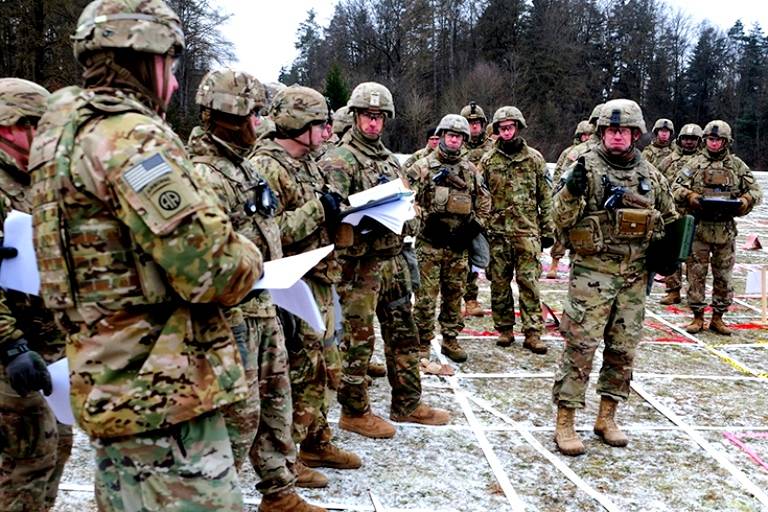
Step 7: Issuing a Prepared Battle Order
Platoon and squad leaders usually give a verbal combat order, which is quite enough for subordinates to understand the intention of the operation. Whenever possible, commanders will issue an order in one of the following two ways:
1) pointing directly to the target (object) or the required area of the terrain;
2) on a map (diagram) or terrain model.
Commanders can require subordinates to repeat all points of the order or demonstrate on a model or diagram how they understood the concept of the operation. To make sure that the military personnel fully understand the concept of the upcoming operation, the commanders can also ask them security questions, for example: indicate at what point your group is dismounted from the transport.
A combat order (OPORD) is an instruction that the commander gives to his subordinates to carry out the coordinated execution of the assigned task. A five-point SMESC order form (shown below) is used to provide pre-mission briefing, organizing mission execution, and assisting subordinate commanders in understanding and following order requirements.
Before reading the order, a map is prepared, which is necessarily oriented to the north (this is also typical for the terrain model). All information known at a given hour that is relevant to the completion of the task is plotted on the map.
In the introduction, before the order, a description of the area is read and shown on the map (its location, terrain features, main supply routes, etc.).
Further on the map indicate: the location of the enemy (target) with the coordinates and the code word of the target; disposition of friendly forces; the location of the main and reserve KNP of the company (platoon) with the indication of coordinates.
At the end of the introduction, a meteorological report is read (the weather at the moment, the forecast weather at the time of the task, the time of sunrise and sunset (if necessary), the maximum air temperature, minimum temperature, wind speed and direction, percentage of illumination). It also provides a description of the influence of these factors on the enemy and its troops.
After that, the order itself is read SMESC algorithm: situation and concept of operation, immediate task, execution, provision and support, management and communication.
1. Situation.
The most recent situation at the given hour is indicated. Information about the enemy, friendly troops attached to subunits, the intentions of the commander one or two levels higher and the plan of operation are taken from the combat order of the senior commander (paragraph 1a).
As for the intentions of the commander 1–2 levels higher, for the squad leader it looks like this (as an example).
The intentions of the company commander (2 levels above): the company commander is going to conduct an operation to stabilize the situation in area "A" at coordinates "1234" in order to provide assistance to the police units. For this, Platoons 1 and 2 will patrol along the M-2 route, and Platoon 3 will organize a patrol base and safe escape routes..
Platoon Leader's Intentions (Level 1 Above): Platoon 1 will conduct an operation to stabilize the situation in area "A" at coordinates "1234-a" in order to calm the civilian population and protect against terrorist threats. For this, the 1st department will set up a checkpoint on the M-2 road at the ROUT point with coordinates "1245". Squads 2 and 3 will alternately patrol the route from the ROUT point to the WEI point with coordinates 1265.
2. The task.
The task is indicated, obtained as a result of the planning process and given by the higher headquarters. This paragraph is not broken down into subparagraphs and is given in the form "5-W": who, what (task), where (area, coordinates), when (time) and why (for what purpose).
The combat mission at this point is mandatory repeats 2 times!
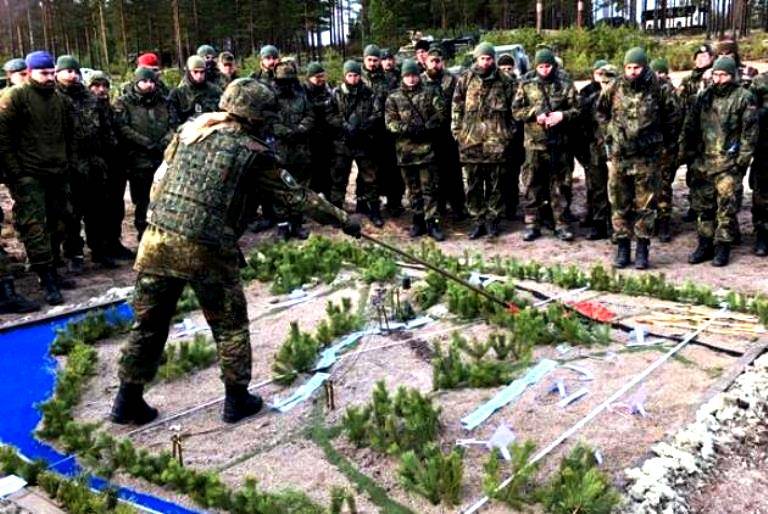
3. Execution.
Next comes the mission plan developed by the company commander.
a) commander operation concept.
The concept of a transaction may be listed in a single clause, it may be divided into two or more sub-clauses, or, if unusually large, may be prepared as a separate appendix. The vision should be based on the COA's obtained from the decision-making process and should define the main effort of the unit. The concept description should be concise, clear and describe, in general terms, how the unit will carry out the task from start to finish.
The concept describes:
- The scheme of maneuver and the use of the main combat units. This subclause describes in detail the mechanism for accomplishing the task. It is addressed to all subordinate and attached units, each of them is separately assigned a combat mission in the form of a task and goal. The direction of the main efforts of the unit is determined. Most of this sub-clause will be occupied by a description of actions in the area of the target (object) of the operation, thus determining how to approach the target, where to organize an NP, the order of dispersal, an alternate gathering area, the procedure for actions on the target (object), the location of the reserve, an action plan in case of failure of the main plan, the order of evacuation of the wounded or prisoners, escape routes, etc. This item is described in more detail by the squad (platoon) commander whose subordinates will directly perform the task. The company commander usually gives a general description.
- The plan and order of fire support or "fire pattern". The scheme of fire is given (it is compulsory in the department), designed to support the implementation of the operation's concept. In this subparagraph, it is necessary to indicate that the unit that solves the main task has priority in fire support. For fire support equipment, the purpose of the fire support, its objectives, the location of the fire support, and restrictions on firing are indicated here.
- At what stage of the operation will the main effort be, that is, the implementation of the main task.
- The final state, that is, the task will be completed when the unit returns to base.
- Definition of groups and their tasks. The tasks of each combat unit are clearly indicated and reported to the higher command that issued the combat order. A separate sub-item is used for each subdivision. Only those tasks that the personnel need to know, understand and perform are identified. Platoon leaders assign tasks to their squads. In this case, the squad commanders may be instructed to separate from their composition special subgroups: an attack subgroup, a reconnaissance or security subgroup, a reconnaissance patrol, a subgroup for assisting in the removal of the wounded, a subgroup for protecting prisoners of war or a mining subgroup. Detailed instructions may also be given to the platoon sergeant, radiotelephonists, sentinels responsible for orientation and for counting steps during the march;
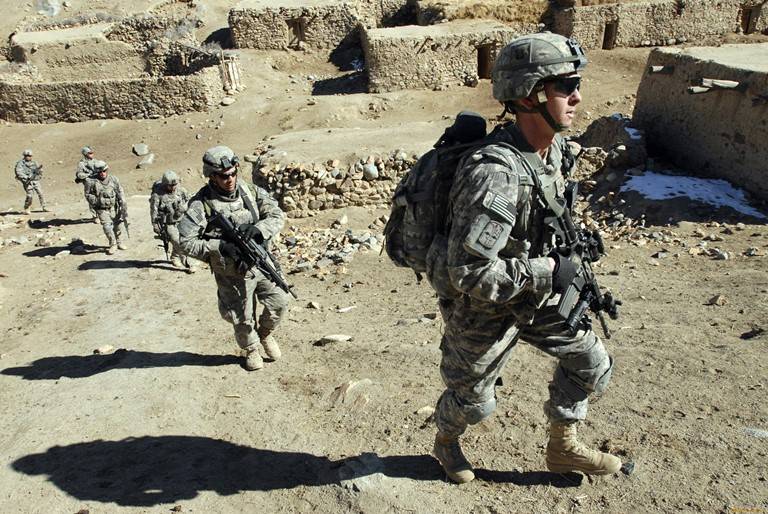
b) order of movement.
When determining the order of movement, it is best to use a terrain model, but most often this is done according to a map (scheme). At the same time, the necessary azimuths, directions and coordinates, the type of order (marching, pre-battle) and methods of movement are determined and indicated. They also indicate the order of advancement (who is behind whom), places of stops, actions on them and the duration of stops; routes of movement (main and alternate); ways to return to their positions (main and backup); collection points, actions in them (the plan includes all collection points with their coordinates and a description of the nature of the terrain); actions in dangerous areas (general action plan for unknown small and large open areas; a special action plan for all known dangerous areas that will meet on the way of the unit);
at) rules of conduct of hostilities and rules of application weapons.
In this subparagraph, you can describe the rules and order, but most often they use abbreviations like UPD (the established procedure is spelled out in the instructions and statutes), PPO (rules for the use of weapons) and IHL (i.e., in accordance with the rules of international humanitarian law, which we talked about in the previous part);
d) protection of troops from the use of weapons of mass destruction by the enemy (the procedure for using means of protection against weapons of mass destruction), the procedure for the use of explosives, identification signals for vehicles and measures to prevent shelling of friendly forces;
d) instructions for interaction. Only those provisions are indicated that relate to two or more divisions and which are usually not indicated in the established order of actions (UPD) of the division.
The hour frames of the operation are also indicated here. For example: do not move out until 16:00, set the checkpoint no later than 20:00 on 13.04.1921/12/30, arrive at the point no later than 04.06.1921:XNUMX on XNUMX/XNUMX/XNUMX.
This sub-clause is always listed last in the "Execution" clause.
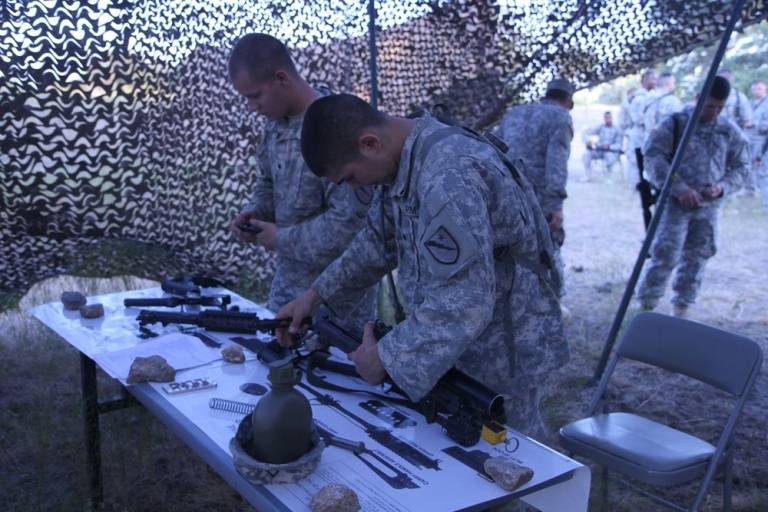
4. Provision and support.
The order of logistics is indicated here, which is determined and clarified for such basic positions as:
- ammunition: their quantity (number of ammunition units), type, distribution between soldiers;
- food and water: the amount at the time of the operation, an indication of the places of their replenishment. Particular attention is paid to determining the amount of water, especially in the hot season;
- uniform: field, civilian, mixed, camouflage suits, insignia, etc .;
- transport: what kind of transport the unit will be taken to the area of operation;
- medical support: the method of evacuation of the killed and wounded, both their own personnel and the enemy, is indicated, the availability of medical transport. The order of evacuation and the location of the collection point for the wounded are determined;
- treatment of prisoners: the method of keeping prisoners and determining the place of their collection, methods of escorting them to the base, etc.
5. Management and communication.
This paragraph indicates the methods and means of command and control and communication, as well as the location of the commanders during the operation.
a. Control.
1) the command line (chain of command) and the call signs of the company commander, platoon commander, chief sergeant of the company (platoon) and squad leaders;
2) the location of the superior commander and his command post;
3) the location of the company (platoon) commander at each stage of the operation.
b. Connection.
Indicate the types of communication for different situations: the main one during the operation - by radio, the backup - satellite communication, communication in emergency situations - by messengers.
Frequencies: main, spare.
Codewords: The main steps of the operation are encoded. For example, leaving the base is a "throw"; arrival at the target - "control", etc.
Passwords and reviews: to go through their positions, checkpoints, to recognize "friend or foe". They can be set for a day or for certain hours. They can be digital (the sum of certain numbers: 13 = 9 + 4) or verbal (single words, city pairs, etc.).
Light signals: for example, enemy - red light (red flare), return to base - green light (green flare).
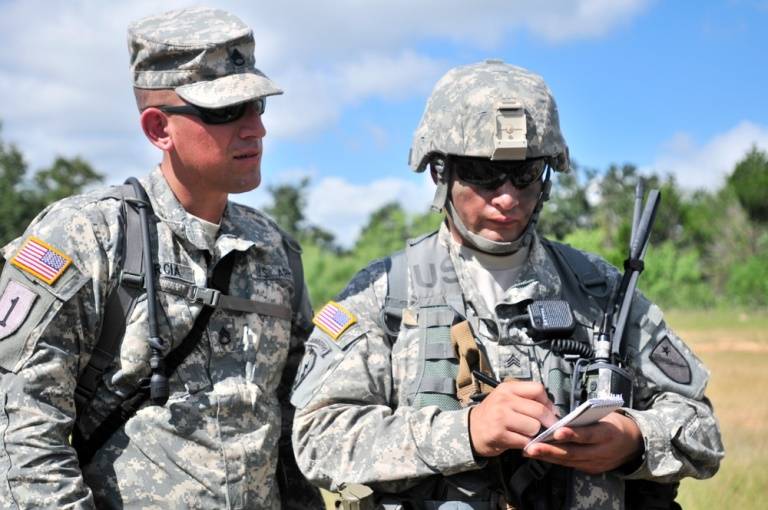
After the order is delivered, clocks are checked and questions answered. First, they ask the commander questions - they clarify some points, add coordinates, points, if they did not have time. Then, if necessary, the commander can ask questions to subordinates: the commanders can demand that subordinates repeat all the points of the order or demonstrate on a model or diagram their understanding of the concept of the operation in order to make sure that the servicemen fully understand the concept of the upcoming operation.
Step 8: Finalization and improvement of the order
At this stage, minor changes to the order may be made (for example, changes in weather conditions, the procedure for dealing with prisoners), as well as final training and checks.
Trainings are used for:
a) practicing the necessary skills or repeating them in order to improve training;
b) elimination of weaknesses or problem areas in the training of subordinates or in the plan of the operation;
c) working out interaction in subordinate units.
The essence of the training consists in the practical training of the squad leaders of the planned actions in the order determined by the platoon commander.
The commander should conduct training in terrain that is similar to the terrain in the area of the forthcoming action, and in similar lighting conditions.
The company (platoon) can begin practicing combat skills and other actions according to the standard procedure even before receiving a combat order. In the classroom, such actions can be practiced as:
a) the order of actions in the area of the target (object) of the attack;
b) storming trenches, bunkers and buildings;
c) actions at the starting point;
d) overcoming obstacles (explosive and non-explosive obstacles);
e) the use of special weapons and ammunition;
f) actions in case of a sudden meeting with the enemy.
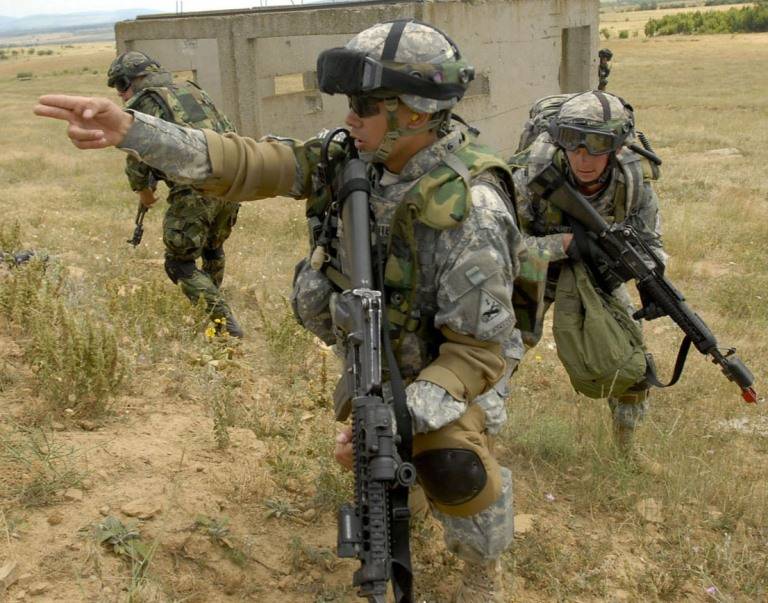
Checks.
Platoon and squad leaders should conduct an initial check as soon as they receive a preliminary order. The platoon sergeant conducts a random check of the readiness of the subunit personnel to perform the assigned task. The platoon leader and platoon sergeant then conduct a final check. They should check:
a) knowledge by the soldiers of the general task of the unit and their duties;
b) weapons and ammunition;
c) uniform and equipment;
d) special equipment that is necessary to complete the assigned task;
e) means of communication;
f) food and water supplies;
g) elements of disguise;
h) elimination of deficiencies identified earlier.
Only after all these steps have been taken, the unit is considered ready to perform a combat mission.
It should be noted here that steps 3 through 8 may not follow a strict sequence. Many of them can run concurrently. In battle, the commander rarely has enough time to study each step in detail. Leaders should use the procedure outlined, at least in an abbreviated form, to ensure that nothing is overlooked in planning and preparation, and that their soldiers understand the platoon and squad tasks and prepare properly. They constantly update their grades during the preparation phase and adjust their plans as needed.
It is also necessary to point out common errors that may occur during the execution of the procedure.
The most common mistake is to think that the task (mission) is not very important. All tasks are important, otherwise you would not have to complete them.
Never assume - always make sure everything is done correctly and accurately.
Not asking questions about the operation. This can lead to the fact that one of the fighters can "tupan" at the most important moment. Or someone did not fully understand their task, which could lead to the failure of the entire operation. That is, be sure to ask the question: "Is everything clear?" or "What's not clear?"
Do not analyze the enemy. You must know where the enemy is, what he is doing, what forces he has, his fighting spirit.
Do not take into account the weather conditions, since, for example, the speed of movement may depend on this.
Lack of time for subordinates to prepare for the assignment. It is unacceptable that someone forgot something, did not complete something, or, for example, did not go to the doctor if he does not feel very well. You don't need a sick fighter on a mission.
Don't make sure that the subordinates understood the plan of the operation.
Disregard exploration.
Failure to eliminate deficiencies identified during inspections.
Lack of responsibility of subordinates for mistakes. They must understand that unfair preparation for the operation, oversight of any trifle on their part, can lead to the failure of the entire mission. As a trivial example: a fighter did not clean his weapon well, it was jammed in battle. While the would-be soldier was fixing the malfunction, his comrades were left without cover and two were killed. The fighter must know that this will not be forgiven him, and he will be punished.
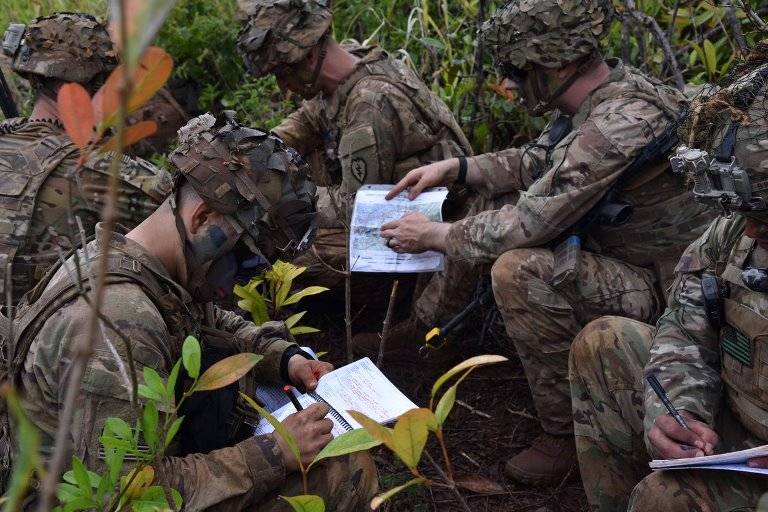
Thus, troop leadership is the process a commander goes through to prepare his unit for a combat mission. It begins when the commander receives a preliminary order (instruction) to complete the mission. Likewise, the process begins again when the boss receives new, changed information or a new mission.
Each plan and order is a kind of projection of events that will happen sometime in the future. Consequently, certain critical assumptions are always made about the enemy, terrain, friendly forces and time. Based on these assumptions, the commander analyzes and chooses his plan of action - the basis for his concept of operation. Then this concept is expanded with the indication of tasks for subordinate or subordinate units. As the battle unfolds, these basic assumptions either turn out to be true or wrong. Correct guesses indicate that the operation is progressing as originally planned.
As stated earlier, the unit management procedure includes 8 steps, steps 3 through 8 may not follow a strict sequence. Many of them can run concurrently. In battle, the commander rarely has enough time to study each step in detail. Therefore, he must use the procedure outlined, at least in an abbreviated form, to ensure that nothing is overlooked in planning and preparation, and that his soldiers understand the tasks of the platoon and squad and are properly prepared.
The commander continually updates his scores during the training phase and adjusts his plans as needed.
PS
If we analyze all of the above and understand this procedure, we will see that there is nothing complicated and supernatural in it. In fact, this is the algorithm of actions that each of us performs every day when we are going to work.
Getting up in the morning, we analyze the weather. Based on this, we decide how we will get to work. If the weather is good, you can walk, but to do this, you need to leave the house early. If it rains, then by public transport or by car.
If we decide to walk, then we determine the route depending on whether we need to go, for example, to a store on the way or not. If so, then we must leave again a few minutes earlier. And so on until the end of the day.
That is, we are constantly analyzing the situation, calculating options, evaluating them and making a more rational decision. And this, in principle, is nothing more than the TLP procedure.
In conclusion, we will give a small and simple example of the execution of the TLP procedure for a company (a scenario for cadets according to NATO standards, the style of the document is preserved).
Destroying an ammo cache (lesson scenario).
The map is oriented north. The company commander indicates the northern, eastern, southern and western boundaries, the prominent features of the area and the location of the company.
Description of the area.
(1) Current position (our): 36U UB 4263 4358.
(2) Heading north.
(3) The main features of the terrain: the terrain is flat, the development of an industrial zone, groups of trees, in the west - a forest.
(4) Main support road: runs east, 5 km from the mission area.
(5) Towns: in the south, 3 km Tauter.
Preliminary WARNO order from the company commander.
1. Situation.
a. Enemy.
(1) Following the recent successes of our troops in the area of operations "TOWTER", it is believed that the rebels are trying to regroup and disrupt the operations of the friendly forces. Enemy forces work in pairs and store weapons for future offensive operations against our forces. The rebels are armed with Russian weapons (AK-74, RPK-74, RPG-7), wear a mixture of various military and civilian clothing, and have no access to any means of transport. Their morale is rated low and they are likely to retreat in contact.
b. Friendly forces: are absent.
(1) Intent of the commander: The battalion commander intends to impair the ability of the insurgents to conduct offensive operations by targeting munitions caches in the area of operation.
c. Powers attached or withdrawn:
(1) 3 sappers (engineers) are assigned to the company.
2. Intended mission / task.
Company 16 will DESTROY insurgent ammunition caches no later than 00:5 pm on December XNUMXth in the LOBSTER area of operations to reduce the insurgency's ability to conduct offensive operations.
"I repeat..."
Company 16 will DESTROY insurgent ammunition caches no later than 00:5 pm on December XNUMXth in the LOBSTER area of operations to reduce the insurgency's ability to conduct offensive operations.
3. Execution:
a. Coordinates: 36U UB 4263 4358.
b. OPORD issue time: 08:40.
c. Present: All platoon leaders will be present.
d. Nobody moves until 14:00.
a. Possible coordinates:
i. Object 1 platoon - SHARK - 36U UB 417 443.
ii. Object of the 2nd platoon - KIT - 36U UB 422 447.
iii. Object of the 3rd platoon - OCTOPUS - 36U UB 427 446.
b. Deputy platoon commander:
i. Platoon 1: __________________________________
ii. Platoon 2: accept sappers, explain their mission and place in the platoon's order of battle.
iii. Platoon 3: _________________________________
with. Rules for opening fire: in accordance with the UPD, as well as a fire card for a platoon, for a squad and for each soldier.
d. Vehicles: none.
4. Provision and support.
Company Chief Sergeant:
- Prepare rations and water for the company for a day.
- Prepare five full ammo magazines for each person in each platoon.
5. Command and communications.
Command vertical (ORBAT).
c. Password: [HO / R / SE] until 12:00, then [TI / G / ER].
Questions.
Time check (clock will be synchronized).
OPORD (battle order).
Orient subordinates to the map. The map can be explained in more detail. Conduct a complete description of the area. Make sure you add all the information about the objects on the map.
Description of the area.
(1) Current position: no change.
(2) Heading north.
(3) The main features of the terrain: the terrain is flat, the development of an industrial zone, groups of trees, in the west - a forest.
(4) Main support road: runs east, 5 km from the mission area.
(5) Towns - in the south, 3 km Tauter.
Show the location on the map.
(1) Enemy position: object "LOBSTER" 36U UB 417 434.
(2) Location of friendly forces: -
(3) Location of company headquarters: 36U UB 415 424.
(4) Location of the company headquarters reserve station: 36U UB 416 424.
Weather forecast:
(1) Present weather - 27 ℃, wind - west.
(2) Forecast weather - sunny, 30 ℃, wind - north-west, 1,5 m / s.
(3) Sunrise and sunset times.
"Gentlemen", ORDER:
1. Situation.
1. Opponent: without changes (that is, what is indicated above in the WARNO of the company commander p. 1a).
2. Friendly forces - absent.
(1) The plan of the commander. The task force commander intends to conduct offensive operations in the key LOBSTER area to protect the local population.
3. The concept of the commander's operation.
(1) Commander's vision: The battalion commander intends to degrade the insurgent's ability to conduct offensive operations by targeting ammunition caches in the area of operation.
(2) Scheme. Moving. The commander sees that this operation takes place in three phases:
1st phase. Planning and preparation.
Regroup all the companies and carry out the TLP in the companies.
2st phase. Extension.
a. 1st Company will set up roadblocks in the area of the operation to inform HQ of any rebel movements.
b. The 2nd company will destroy the caches of weapons and ammunition at the "SHARK", "Whale" and "OCTOPUS" facilities.
c. The 3rd rota will remain in reserve.
3st phase. Return to base.
a. After all the lenses are destroyed, all the companies return back to the base, analyze the operation carried out and prepare for the upcoming missions.
4. The main effort.
The main effort of the commander will be during the 2nd phase, when the 2nd company destroys the objects "SHARK", "Whale" and "OCTOPUS".
5. Final state the commander will be reached when all targets have been destroyed and the battalion is ready for future operations.
2. The task.
The Second Company will destroy rebel ammunition and weapons caches no later than 16:00 pm on December 5, 2021 in the LOBSTER Operations Area, in order to reduce the ability of the rebels to conduct offensive operations.
"I repeat again":
The Second Company will destroy rebel ammunition and weapons caches no later than 16:00 pm on December 5, 2021 in the LOBSTER Operations Area, in order to reduce the ability of the rebels to conduct offensive operations.
3. Execution.
1. The concept of the commander's operation.
i. Company Commander's Intention: I intend to impair the ability of the insurgents to carry out offensive operations. This will be accomplished by a series of raids (at platoon level) on three ammunition caches in the area of operations.
2. The scheme of movement.
I see that this operation takes place in three phases:
a) Phase 1: Conduct TLP at Platoon Level.
Moving to the area of operation. Reconnaissance patrol from 1 platoon is the first to move to the target "LOBSTER". Behind him through "N" +10 min. the whole company moves forward: 1 platoon, followed by 2 and 3 platoons. I move with 2 platoon, my deputy with 1 platoon. The company is moving in a "column" formation. Distance between platoons - within sight, but not more than 200 m;
(b) Phase 2: Attacks on designated targets in the LOBSTER area of operations;
c) Phase 3: Return to base and preparation for future missions.
“Put your pens / pencils aside and look at the map here. Explain your scheme for moving around the map "(it is an appeal to the platoon commanders to see if they understood everything. Everything should be depicted on the map as the operation should take place.).
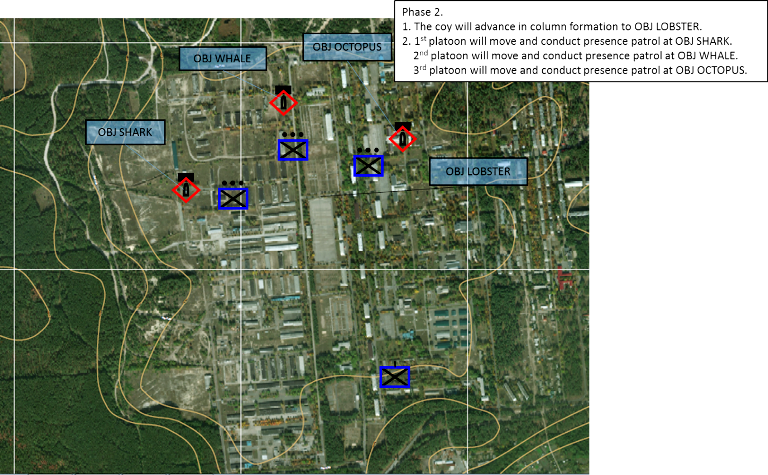
In the first phase, all platoons will conduct TLPs and move to their area of operations.
In the second phase:
The 1st platoon moves forward and raids the object "SHARK" and, no later than 16:00, destroys the object "SHARK".
The 2nd platoon moves forward and raids the KIT facility and destroys the KIT facility no later than 16:00.
The 3rd platoon moves forward and raids the OCTOPUS object and destroys the OCTOPUS object no later than 16:00.
In the third phase, all platoons will return to base, review the operation and prepare for future operations.
"You can start writing again."
3. The main effort.
My (company commander) the main effort will be during the second phase, when it is necessary to destroy the object "KIT".
4. Final state.
My final state will be reached when all three caches of ammunition and weapons have been destroyed and the entire company returned to base and ready for future operations.
4. Grouping and tasks.
1) the first platoon "task":
a. phase 1:
i. Preparation, TLP and advance to the area of operation.
b. phase 2:
i. Destruction of the "SHARK" target.
c. phase 3:
i. Returning to base and preparing for the next operations.
2) the second platoon "task":
a. phase 1:
i. Preparation, TLP and advance to the area of operation.
b. phase 2:
i. Destruction of the KIT target.
c. phase 3:
i. Returning to base and preparing for the next operations.
3) the third platoon "task":
a. phase 1:
i. Preparation, TLP and advance to the area of operation.
b. phase 2:
i. Destruction of the "OCTOPUS" target.
c. phase 3:
i. Returning to base and preparing for the next operations.
5. Instructions for coordination.
1. Timing:
i. Two options for action are presented to the commander - no later than 10:30.
ii. Combat order (OPORD) issued to your troops - no later than 13:00.
iii. The advance of the company to the area of operation - no later than 15:00.
iv. Object destroyed - no later than 16:00.
v. Return to the patrol base - no later than 17:00.
2. Locations:
i. Object coordinates:
1. Object "SHARK" - 36U UB 4176 4434.
2. Object "KIT" - 36U UB 4218 4475.
3. Object "OCTOPUS" - 36U UB 4271 4458.
3. Rules for opening fire: UPD, and also indicated on the fire card of the platoon and squads.
4. Chemical, biological, radiological or nuclear threats: state "0".
6. Provision and support.
a) ammunition. Five full shops for each soldier. The deputy company commander during regrouping, if necessary, redistributes ammunition;
b) dry rations and water. One dry ration and at least 2 liters of water for each soldier with him;
c) clothing. Combat uniform without a gas mask;
d) vehicles - none;
e) medical devices:
a) all platoons must have one first aid kit, stretcher for each squad. Each soldier has an individual first aid kit;
b) Phase 1: The wounded (sick) will be brought to the head sergeant of the company at the headquarters before starting the movement. If the wound is received while driving, it is necessary to establish a holding point, wait for evacuation using ground transport;
c) Phase 2: Victims who were injured in the attack on the object will be evacuated through the company wounded collection point by ground transport. This is coordinated by the chief sergeant;
d) phase 3: as written in the first phase;
f) prisoners. According to the prisoner procedure, the detainees will be searched, briefly interrogated and handed over to the deputy company commander at headquarters.
7. Command and communications.
1. Command.
i. in accordance with the vertical of management:
a. company commander;
b. deputy company commander;
c. commander of the 1st platoon;
d. commander of the 2nd platoon;
e. commander of the 3rd platoon;
ii. Company headquarters coordinates - 36U UB 4263 4358.
2. Communication.
i. frequency:
i. main frequency - 1st channel.
ii. spare frequency - 2nd channel.
iii. backup communication - satellite phone.
iv. emergency communication - messenger.
ii. callsigns:
(1) company - 2 (according to the companies).
(2) company commander - 29.
(3) the commander of the first platoon - 21.
(4) the commander of the second platoon - 22.
(5) the commander of the third platoon - 23.
(6) the commander of the support platoon - 28.
iii. code words:
(1) exit from the base - "CAT";
(2) arrival at the location of Operation LOBSTER - DOG;
(3) arrival at the object SHARK - "MISHKA";
(4) arrival at the KIT facility - "BIRD";
(5) arrival at the object OCTOPUS - "SNAKE";
(6) destruction of the cache of ammunition - "KOROVA";
(7) return to base - "BULL".
iv. Password - [HO / R / SE] before 12:00, after 12:00 [TI / G / ER].
v. Light signals: 1 red rocket - attack of the object, 1 green rocket - return to base.
Questions?
Time check (the clock will be synchronized).
This is how the procedure for managing and preparing a unit for battle according to NATO standards looks like.
In principle, it is not much different from our system, only more detailed. We have most of the items "meant" and simply are not prescribed anywhere.
Information